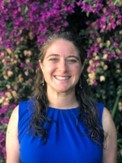
Friday, April 12, 2024 1:45 pm, Mendenhall Laboratory Room 291 or online using this Zoom link

Dr. Jacqueline Gerson
Assistant Professor
Department of Earth and Environmental Sciences & W.K. Kellogg Biological Station
Michigan State University
Email: gersonja@msu.edu
Host: Audry Sawyer
Mercury and gold in the Amazon: Tracing the fate and transport of mercury from artisanal and small-scale gold mining
One of the most immediate threats to the Peruvian Amazon–a global biodiversity hotspot–is illegal artisanal and small-scale gold mining (ASGM), which results in widespread land cover change. In ASGM, forests are cleared, rivers are dredged, and mining ponds are created. Gold is isolated using mercury, a potent neurotoxin, which then enters the aquatic and terrestrial ecosystem via atmospheric deposition or from contaminated tailings. Consequently, ASGM activity represents the largest global source of anthropogenic mercury emissions. While previous studies have shown widespread deforestation and mercury contamination from ASGM, little is known about how ASGM changes the hydrologic landscape and how mercury loading and transformation processes differ across these environments. Little is also known about the fate and impact of these atmospheric mercury emissions within forests located near ASGM. We analyzed remote sensing imagery of the Peruvian Amazon over the past 35 years and collected water samples from a 200-km reach of the Madre de Dios River, its tributaries, and surrounding oxbow lakes and mining ponds in areas both upstream and downstream of ASGM activity. We used these data to examine how the creation of ASGM-associated ponds impacts mercury transformations into the more bioavailable form of methylmercury within aquatic ecosystems. We then collected bulk precipitation, throughfall, litterfall, soil, and songbird feathers from locations near and far from ASGM activity in the Madre de Dios region of Peru. We used these data to determine whether atmospherically transported mercury derived from ASGM activity is entering local forest soils and food webs. These results raise important questions about the impact of mercury pollution on both aquatic and terrestrial ecosystems as well as for indigenous communities and wildlife that depend on them.
Dr. Jacqueline Gerson
Dr. Jacqueline Gerson is an Assistant Professor in Earth and Environmental Science and Kellogg Biological Station at Michigan State University. As a watershed biogeochemist, she is interested in the impact of human activity on the cycling of elements, particularly of contaminants and trace elements. Her research examines the fate, transport, and transformation of these elements and compounds within and between terrestrial and aquatic ecosystems and evaluates the implications this has for the people and animals that live in these landscapes. She is also the co-founder and director of Girls on outdoor Adventure for Leadership and Science (GALS), a free hands-on science program for high school females from historically excluded groups. Jacqueline earned her PhD in Ecology from Duke University, MS in Environmental Engineering Science from Syracuse University, and BA in Biochemistry from Colgate University.
